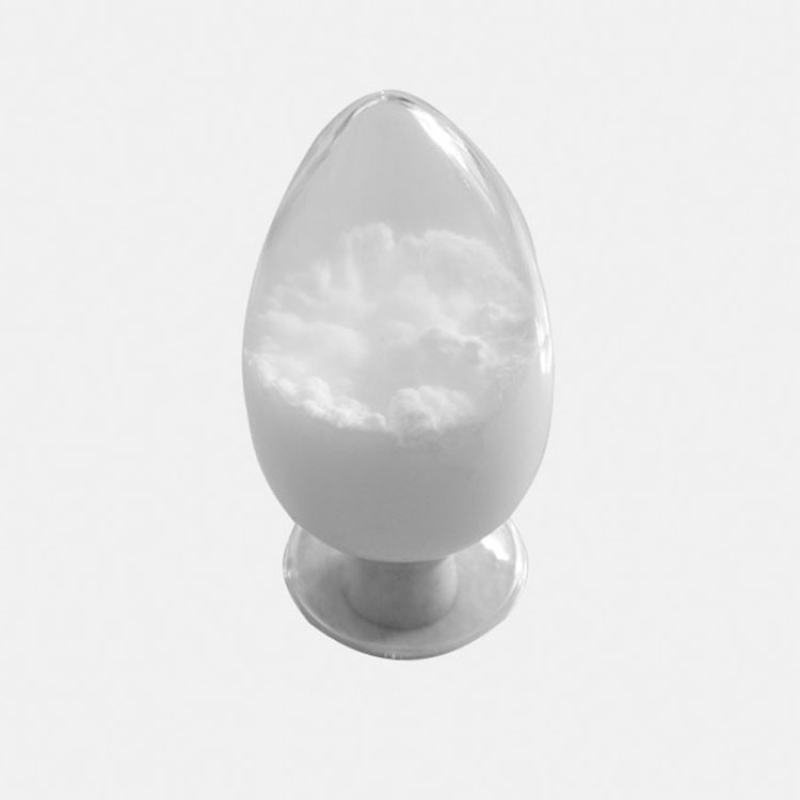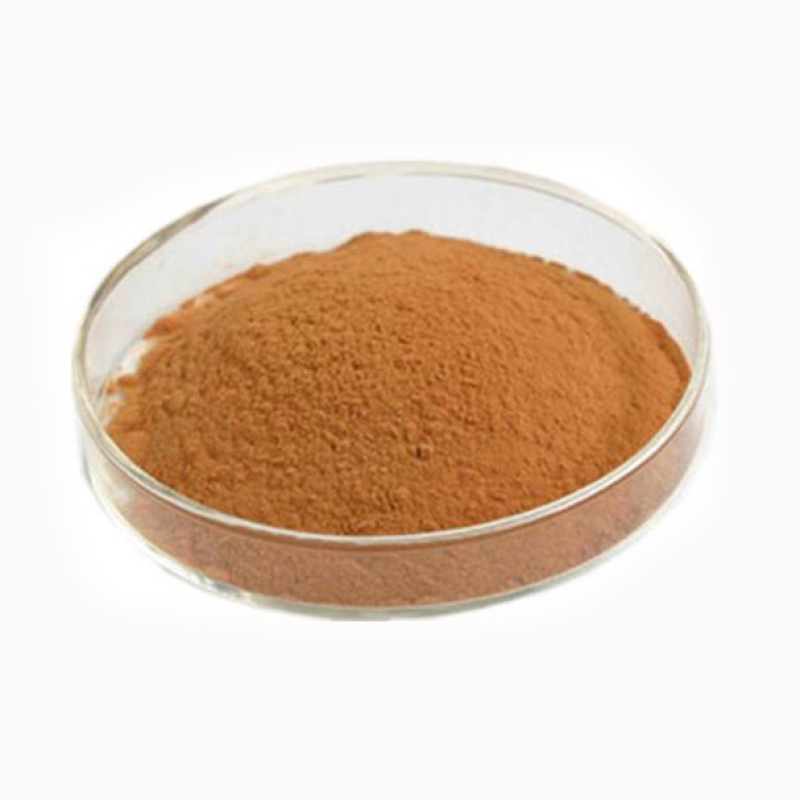4,4'-Methylenebis(N,N-diglycidylaniline) Chemical PropertiesBoiling point 619.3±35.0 °C(Predicted)density 1.15 g/mL at 25 °C(lit.)vapor pressure 0Pa at 24.85℃refractive index n20/D 1.601(lit.)Fp >230 °Fform clear liquidpka4.58±0.50(Predicted)color Light yellow to BrownWater Solubility 9.2mg/L at 20℃LogP2.12 at 22℃EPA Substance Registry SystemOxiranemethanamine, N,N'-(methylenedi-4,1-phenylene)bis[N-(oxiranylmethyl)- (28768-32-3)Safety InformationHazard Codes Xi,NRisk Statements 43-51/53Safety Statements
Contacta ahora
Products Description of PAGOCLONE CAS#133737-32-3Pagolone is a specific GABA (Gamma-aminobutyric acid) receptor modulator that can reduce stuttering.
Contacta ahora
Indole-3-Butyric acid CAS# 133-32-4Indole-3-butyric acid pure products are white to light yellow crystalline solids, and industrial products are often light brown or white powder. Has a slight peculiar smell. Insoluble in water, slightly soluble in benzene, toluene, easily soluble in ethanol, ether, acetone and chloroform and other organic solvents.
Contacta ahora
Products Description of Thyroid powder CAS#50809-32-0In the early days, L-thyroxine was extracted from animal thyroid glands, but the resulting product had low purity, poor optical purity, and its production was limited by the source of animal thyroid glands. Now, chemical synthesis methods are mainly used.
Contacta ahora
Products Description of 3-Ethyl-3-oxetanemethanolCAS#3047-32-3Mainly used for UV polymerization, synthesis of coatings and resins.
Contacta ahora
Products Description of Sodium carboxymethyl cellulose CAS#9004-32-4Sodium carboxymethylcellulose (CMC) is a carboxymethylated derivative of cellulose, also known as cellulose gum. It is an anionic cellulose ether and the main ionic cellulose gum. It is usually an anionic polymer compound obtained by reacting natural cellulose with caustic soda and monochloroacetic acid. The molecular weight of the compound ranges from several thousand to millions. CMC is a white or milky white fibrous powder or granule with a density of 0.5-0.7 g/cm3. It is almost odorless and tasteless and hygroscopic.
Contacta ahora
Products Description of Sodium cocoyl isethionate CAS#61789-32-0Sodium Cocoyl Isethionate (SCI) is a mild, foaming and highly stable anionic surfactant. SCI has excellent hard water resistance, very low toxicity and good biodegradability.
Contacta ahora
Products Description of Butyl acrylate CAS#141-32-2Butyl acrylate is mainly used to make polymer monomers for fibers, rubbers, and plastics. It is used in the organic industry to make adhesives, emulsifiers, and as an organic synthesis intermediate.It is used in the papermaking industry to make paper reinforcing agents. It is used in the coating industry to make acrylic coatings. Butyl acrylate (butyl acrylate) is the most important variety of acrylic esters.
Contacta ahora
Asphalt, Sulfonated, Odium Salt CAS#68201-32-1In drilling fluid, it can inhibit shale hydration and expansion, prevent shale from exfoliation and collapse, stabilize the well wall, and improve plugging effect. It can improve the performance of drilling fluid and ensure the smooth progress of drilling operations.
Contacta ahora
Products Description of Imidazole CAS#288-32-4 Imidazole, with the molecular formula C3H4N2, is an organic compound, a type of diazole, and a five-membered aromatic heterocyclic compound containing two meta-nitrogen atoms in the molecular structure. The unshared electron pair of the 1-nitrogen atom in the imidazole ring participates in the cyclic conjugation, and the electron density of the nitrogen atom is reduced, making it easy for the hydrogen on this nitrogen atom to leave in the form of hydrogen ions.Imidazole is acidic and alkaline, and can form salts with strong bases.
Contacta ahora
Products Description of Pyromellitic Dianhydride CAS#89-32-7The English name of pyromellitic dianhydride is Pyromellitic Dianhydride (abbreviated as PMDA, the same below), which is mainly used to synthesize polyimide.
Contacta ahora
Products Description of Ethyltriphenylphosphonium bromide CAS#1530-32-1Ethyltriphenylphosphonium bromide is a chemical product with the molecular formula C20H20BrP.Ethyltriphenylphosphonium bromide Chemical PropertiesMelting point 203-205 °C(lit.)Boiling point 240℃[at 101 325 Pa]density 1.38[at 20℃]vapor pressure 0-0.1Pa at 20-25℃Fp 200 °Cstorage temp. Inert atmosphere,Room Temperaturesolubility 174g/l solubleform Crystalline Powdercolor White to off-whiteWater Solubility 120 g/L (23 ºC)Sensitive HygroscopicBRN 3599630I
Contacta ahora
Products Description of Imidazole CAS#288-32-4Imidazole, with the molecular formula C3H4N2, is an organic compound and a type of diazoles. It is a five-membered aromatic heterocyclic compound containing two meta-nitrogen atoms in the molecular structure.
Contacta ahora
Products Description of Sodium benzoate CAS#532-32-1In 1870, when British scientist H. Fleck was looking for an acid to replace the well-known salicylic acid, he first described the antiseptic effect of benzoic acid. He established the antiseptic effect of this substance. Since the safety research of sodium benzoate was not in-depth at that time and the production technology was not mature enough, it was not used for food preservation until the beginning of this century. Since then, it has become one of the most used preservatives in the world because of its low price.
Contacta ahora
Products Description of Alginic acid CAS#9005-32-7Alginic acid is a viscous organic acid, also known as alginic acid and alginic acid. The product is white to light yellow-brown powder. The average molecular weight is about 240,000. Melting point>300℃. It is slightly soluble in hot water, and the viscosity of its aqueous solution is 4 times higher than that of starch. It is insoluble in cold water and organic solvents, and slowly dissolves in alkaline solutions.
Contacta ahora
Products Description of 2-Aminoquinoline CAS#580-22-32-Aminoquinoline is a pharmaceutical intermediate and synthetic material intermediate. It is a white to light yellow powder crystal. It is soluble in chloroform and methanol. It is flammable and produces nitrogen oxides when burned.
Contacta ahora
Products Description of 3-Methoxythiophene CAS#17573-92-13-Methoxythiophene is an important intermediate in organic synthesis.3-Methoxythiophene Chemical PropertiesMelting point 49-50 °C(Solv: ethyl ether (60-29-7); ligroine (8032-32-4))Boiling point 80-82 °C/65 mmHg (lit.)density 1.143 g/mL at 25 °C (lit.)refractive index n20/D 1.532(lit.)Fp 121 °Fstorage temp. Keep in dark place,Inert atmosphere,2-8°Cform Liquidcolor Clear light brownSensitive Air SensitiveBRN 106404LogP1.810 (est)CAS DataBase Reference17573-92-1(CAS DataB
Contacta ahora
Products Description of 2-Methoxy-5-pyridineboronic acid CAS#163105-89-32-Methoxy-5-pyridineboronic acid, an organic chemical substance, molecular formula: C6H8BNO3.2-Methoxy-5-pyridineboronic acid Chemical PropertiesMelting point 135-140 °C(lit.)Boiling point 313.2±52.0 °C(Predicted)density 1.24±0.1 g/cm3(Predicted)storage temp. 2-8°Cpka7.26±0.10(Predicted)form powder to crystalcolor White to Almost whiteWater Solubility Soluble in water.BRN 9119950InChIKeyDHADXDMPEUWEAS-UHFFFAOYSA-NCAS DataBase Reference163105-89-3(CAS DataBase Reference)Safe
Contacta ahora
Products Description of 2-Amino-5-bromopyrazine CAS#59489-71-32-Amino-5-bromopyrazine is a compound that can be used in organic synthesis.2-Amino-5-bromopyrazine Chemical PropertiesMelting point 113-117 °C (lit.)Boiling point 274.2±35.0 °C(Predicted)density 1.844±0.06 g/cm3(Predicted)storage temp. Keep in dark place,Sealed in dry,Room Temperaturesolubility Ethanol, Ethyl Acetate, Methanolform Brown Needlespka1.66±0.10(Predicted)color Light yellow to BrownInChIKeyKRRTXVSBTPCDOS-UHFFFAOYSA-NCAS DataBase Reference59489-71-3(CAS DataBase Reference)Safety Inf
Contacta ahora
Products Description of 2-(4-FLUORO-PHENYL)-PIPERAZINE CAS#65709-33-32-(4-Fluorophenyl)-piperazine is a common pharmaceutical intermediate.2-(4-FLUORO-PHENYL)-PIPERAZINE CAS#65709-33-3 Chemical PropertiesMelting point 111-114°CBoiling point 287.2±35.0 °C(Predicted)density 1.079±0.06 g/cm3(Predicted)storage temp. 2-8°Csolubility DMF: 30 mg/ml; DMF:PBS(pH7.2) (1:2): 0.33 mg/ml; DMSO: 30 mg/ml; Ethanol: 30 mg/mlform A crystalline solidpka8.76±0.40(Predicted)Safety Information HS Code 2933599590Product Application of 2-(4-FLUORO-PHENYL)-PIPERA
Contacta ahora
Products Description of 2-Amino-6-chlorobenzoic acid CAS#2148-56-32-Amino-6-chlorobenzoic acid is a reactive compound that can be used as an antimicrobial agent. It binds to the active site of enzymes and inhibits their function, thereby preventing bacterial growth. It has acidic properties, which may be due to its ability to act as a dehydrating agent to hydrolyze esters.
Contacta ahora
Products Description of 3-Hexylthiophene CAS#1693-86-33-Hexylthiophene is an important and commonly used electroactive compound.3-Hexylthiophene Chemical PropertiesMelting point -39.15°C (estimate)Boiling point 65 °C/0.45 mmHg (lit.)density 0.936 g/mL at 25 °C (lit.)refractive index n20/D 1.496(lit.)Fp 100 °Fstorage temp. Keep in dark place,Inert atmosphere,Room temperatureform Liquidcolor Clear colorless to slightly yellow or redWater Solubility Partly soluble in water.BRN 1617129CAS DataBase Reference1693-86-3(CAS DataBase Refe
Contacta ahora
Products Description of Direct Pigment Yellow 3 CAS#6486-23-3The pigment is a greenish light yellow powder with bright color. It can be dissolved in organic solvents such as ethanol and acetone when heated. It turns yellow when it meets concentrated sulfuric acid. The color remains unchanged in concentrated nitric acid, concentrated hydrochloric acid and dilute sodium hydroxide. It has good light resistance and heat resistance.
Contacta ahora
Products Description of Phenibut CAS#1078-21-34-Amino-3-phenylbutyric acid hydrochloride is often used to prepare antidepressants.
Contacta ahora

































